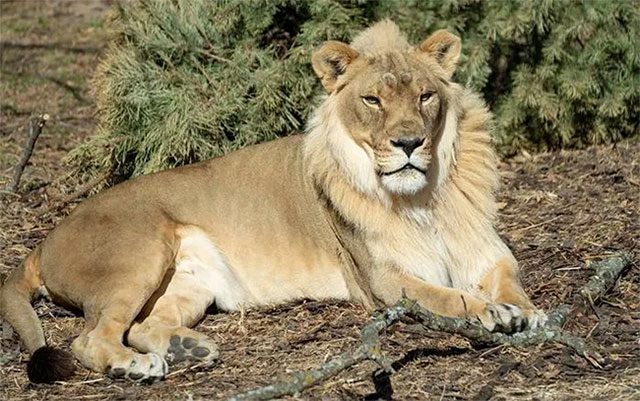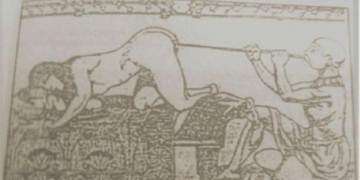An 18-year-old female lion at the Topeka Zoo and Conservation Center in Kansas, USA, has developed a mane similar to that of a male lion after the death of a male companion.
Lions are often known for their sexual dimorphism, with males typically sporting a mane that is distinct in color from their body fur. Female lions usually lack such magnificent manes and instead have a light sandy color across their bodies. However, Zuri, a female lion at the Kansas zoo, is an exception.

Female lion Zuri unexpectedly grows a mane after the death of a male lion companion.
Sexual dimorphism refers to the distinct physical differences between males and females of the same species. This difference occurs in organisms that reproduce sexually; a classic example is the variation in reproductive organs. Other differences can include secondary sexual characteristics, body size, physical strength and morphology, decorative traits, behavior, and various other bodily characteristics.
Until October 23, 2020, Zuri lived with a male lion named Avus, who passed away on that date. Following Avus’s death, zookeepers began to notice that Zuri had started to develop a mane similar to that of an adult male.
According to them, Zuri is physically dominant compared to other female lions, and although her mane is quite unusual, her body size still does not compare to that of a typical adult male.
 Lions are a sexually dimorphic species; males are larger than females, with a typical weight range of 150 to 250 kg (330 to 550 lb) for males and 120 to 182 kg (265 to 400 lb) for females, making them the second largest species in the Felidae family after the Northeast Asian tiger. Male lions can easily be recognized from afar by their manes.
Lions are a sexually dimorphic species; males are larger than females, with a typical weight range of 150 to 250 kg (330 to 550 lb) for males and 120 to 182 kg (265 to 400 lb) for females, making them the second largest species in the Felidae family after the Northeast Asian tiger. Male lions can easily be recognized from afar by their manes.
Shanna Simpson, the animal curator at the Topeka Zoo, told NPR: “This is an incredibly rare phenomenon. We had never even heard of this happening until we saw Zuri.”
There could be several explanations for Zuri developing a mane like a male lion. Of course, most relate this phenomenon to the death of the male lion Avus. However, Kris Everatt, a conservation scientist at the wild cat conservation organization Panthera, stated: “I don’t think there is really any kind of evolutionary change happening due to the death of the male lion or the lack of males or too much competition with other females or anything like that… I think it’s just a random occurrence,” he told Live Science.
Nevertheless, this is not the first time a female lion has grown a healthy mane. For instance, in Botswana, five other female lions have also been reported to have developed manes, with one even displaying male-like behavior such as roaring and bonding with other females.
Scientists speculate that an unusually high level of testosterone in the body is the cause of this entire phenomenon, although no official hormone tests have been conducted on wild female lions. Regardless, this remains a rather surprising occurrence.
A few years ago, another 18-year-old female lion named Bridget began to grow a mane at the Oklahoma City Zoo. After examining Bridget’s health, veterinarians discovered a tumor on her adrenal gland. This was responsible for increasing levels of hormones such as cortisol and androstenedione as shown in blood tests conducted on Bridget.
However, after all, these lions are older individuals. Wild lions typically live for 15 or 16 years, and 18 years is certainly pushing the upper limit even for captive animals. Therefore, the unexpected mane growth in Zuri and Bridget may simply be the result of changing hormone levels as they age.
The veterinarian at the Topeka Zoo did not request special hormone testing for Zuri, according to animal manager Shanna Simpson. The female lion passed all standard health screenings, and hormone testing was not part of the routine checks. Unless the female lion shows signs of illness, the zoo will continue to monitor her without conducting any invasive testing.





















































